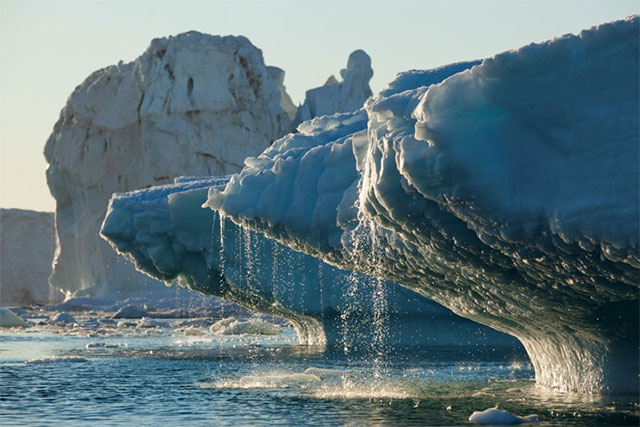Glaciers are eroding the Earth faster than we thought
Glaciers – nature's slow artisans – are silently reshaping the planet's surface, and humans can now measure the process with unprecedented precision.
An international team of researchers recently used machine learning to analyze 85% of the world's modern glaciers. The results showed that most of them are 'eroding' the Earth's surface at a rate of between 0.02 and 2.68 mm per year – equivalent to the thickness of a credit card.
The speed of change is incredible
Glaciers have shaped many of the iconic landscapes of polar countries, including Canada – from carving out valleys in Banff, to eroding the topography of Ontario, to leaving fertile soils in the prairies. They continue to shape the planet's surface, but the question is: how fast is it happening?
In a study published on August 7 in the journal Nature Geoscience , geographer Sophie Norris (University of Victoria – UVic) and her colleagues have provided the most detailed assessment to date of the rate at which glaciers erode terrain. This is also the first time scientists have had a global estimate of the future erosion rate of more than 180,000 glaciers.
Using a global machine learning analysis, the team predicted the erosion rates of 85% of modern glaciers. The results showed that 99% of them are wearing away at a rate of 0.02 to 2.68 mm per year, about the thickness of a credit card.

Meaning and application
' The conditions that lead to erosion at the base of glaciers are much more complex than we previously thought ,' said Dr Norris. ' The study shows that many factors strongly influence the rate of erosion: temperature, the amount of water beneath the glacier, the type of rock in the area, and even the amount of heat coming from deep within the Earth. '
Professor John Gosse (Dalhousie University) added: ' Because measuring erosion in active glacial environments is extremely difficult, this study helps us get estimates for even the most remote areas of the world .'
Understanding the mechanisms of glacier erosion not only helps with landscape management and environmental conservation, but is also valuable in planning long-term nuclear waste storage and monitoring the global transport of sediments and nutrients .
You should read it
- The Earth used to be purple and 8 secrets of little surprise
- You may not believe it but the glacier in Montana is disappearing
- 17 signs that the 6th great extinction - the nightmare of humanity is about to sweep through the earth
- 'Erosion of trust': Social media's a mess amid George Floyd protests
- The new hypothesis about Snowball Earth and how the earth freezes hundreds of millions of years ago
- If there is an apocalypse due to climate change, this Earth black box will store all the data
 Amazon rainforest could disappear within the next century
Amazon rainforest could disappear within the next century Greenland's Melting Ice Unexpectedly Nurtures Marine Life – New Discovery from NASA
Greenland's Melting Ice Unexpectedly Nurtures Marine Life – New Discovery from NASA Scientists reveal why cats always sleep on their left side
Scientists reveal why cats always sleep on their left side Is climate change really a threat to human life?
Is climate change really a threat to human life? 27 million tons of nanoplastic particles discovered in the North Atlantic
27 million tons of nanoplastic particles discovered in the North Atlantic These fruit trees can turn CO₂ into rock
These fruit trees can turn CO₂ into rock